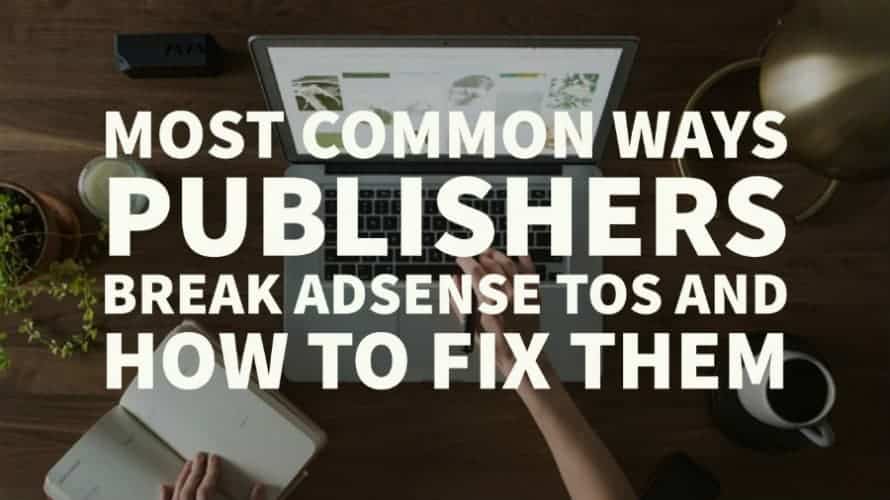
This post was most recently updated on November 23rd, 2020
If not implemented correctly, there is always a big chance of AdSense policy violations occurring when publishers set up their ad inventory.
In this post we’ll discuss some of the most common situations that have resulted in publisher websites blocked from Google AdSense, Ad Exchange or worse, their revenues withheld.
In 2017 Google announced that they would shift to page-level violations regarding AdSense policy issues. Publishers now receive notifications on a page-level basis and have a chance to fix any AdSense policy issues with clear instructions.
Ads will still display for pages that were not affected by policy violations. After violations are fixed, you can request a review to re-enable ads on the pages that were restricted.
This development is significant for publishers as it drastically increases AdSense policy and violation transparency. It also shows users why a page is non-compliant and enables them with the exact steps to fix issues.
Even though this development is a great help, publishers still need to be cautious and comply with policies to prevent any loss of income.
Since viewability and click-through rate affects ad revenue, it can be very tempting for a publisher to create slightly misleading ad labels instead of labeling them as “advertisement.”
Suggested solution: Replace the display ad with a programmatic native ad just below an actual article recommendation.

Or Aligning images with text ads like below.

Source: https://support.google.com/adsense/answer/1346295?hl=en
For similar reasons as previously mentioned such as improving viewability, some publishers are tempted to use AdSense or Ad Exchange ads on pages where users are forced to wait.
Often these “wait pages” force users to stay on the page for 5-15 seconds looking at the ad before they can finish downloading a file or move on to the next page.
It’s a widespread practice within mobile apps and gaming sites where users go to download files.
Suggested solution: Set up a sticky tower to frame the page which should provide similar viewability results.

Seven ads on desktop, six ads on mobile and an interstitial may sound great from a revenue perspective. However, that’s often not the case.
With Google, the more ads cramped up on the page, the more they lose their value.
If you think having half a dozen ads will convert into more ad revenue, you will be surprised by how four ads placed in the most strategic locations can beat the income you get from your crowded pages.
Suggested solution: Determining the best place to position your ads
The truth is that the above mentioned are just a few of the potential AdSense violations that you could face. There are many more, and as a publisher, it can be very overwhelming.
Why not let the ad optimization experts take care of it for you? Instead of worrying and spending time on policies, finding the best ad placements or the right amount of ads to show, let MonetizeMore help.
Start focusing on what you as a publisher do best – creating content, engaging your audience, increasing traffic and growing your business!
Contact us for a free consultation and find out how MonetizeMore can help.

Kean Graham is the CEO and founder of MonetizeMore & a pioneer in the Adtech Industry. He is the resident expert in Ad Optimization, covering areas like Adsense Optimization,GAM Management, and third-party ad network partnerships. Kean believes in the supremacy of direct publisher deals and holistic optimization as keys to effective and consistent ad revenue increases.
10X your ad revenue with our award-winning solutions.